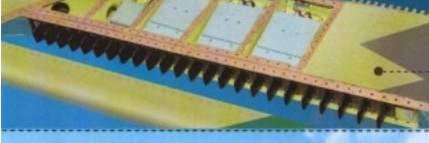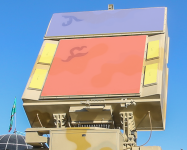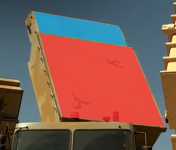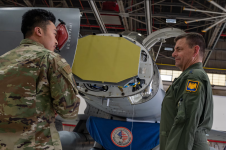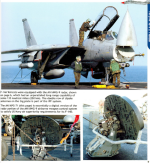Hack-Hook
INT'L MOD
- Jan 11, 2012
- 21,677
- 18,062
- Country of Origin

- Country of Residence

I wrote a comprehensive article about Su-35 myself already. Not addressing that articles claims (not worth it) but looking at the platform and its systems as a whole.

The Su-35 could revive Iran's Air Force
The Su-35SE's projected purchase aims to revive an air force that is a shadow of its former gloryirangeomil.blogspot.com
that search is 10 degree by 10 degree and no its not enough as its in situation there is no electronic warfare and for record rafael has 0.5m rcs and f18 has an rcs of 1m and f16c rcs is reduced to 1.2mIrbis-E can detect a 3m2 RCS target (roughly equivalent to an F-16, with the F-15 regularly being quoted at 10-25m2) in a narrow-FOV cued search out to a claimed 400km. In a more conventional volume search this drops to 200km.
again usual Russian practice , 50km and people say oh its fantastic , they published that against an after burning fighter not one without afterburner on so no you cant detect any stealth fighter with it and you failed one important aspect of OLS-35 , its not an imaging sensor , it only can distinguish 4 point and a flare blind it . meaning if there is a combination of 5 fighter coming head on (let say they are using after burner) you won't be aware of existence of the fifth fighter for comparison EuroFirst PIRATE on Eurofighter use imaging sensor and can distinguish 500 point , thats why i say the sensor on our infrared missiles is more advanced than OLS-35, the system is the most out dated part in Su-35Supporting the Irbis-E is the OLS-35 IRST, which can detect non-afterburning fighters in a head-on aspect from up to 50km away. This fully passive system (giving no RWR indication) can be used to launch infrared BVR missiles such as the R-27T/ET, and can be of particular use against stealth aircraft or in a highly jammed environment
Rounding out the Su-35SE's situational awareness toolkit is the S-108 datalink, which is encrypted and reported to operate in a similar manner to Link-16. Chinese journalists say the PLAAF has made it compatible with their indigenous AWACS aircraft, which is promising for the potential of integrating it with Iran's IADS.
sadly that's the problem also , its propriety and only work with su-35 , our air defense or other aircraft are not compatible with it and only God knew if its possible to make it compatible with our other device and at least I could not find evidence that we ask Russian to change it in a manner to be compatible with our systems
What we do know is that the Su-35 does not have a Helmet Mounted Display (HMD), only the monocle-type NSC-T-04/NSTs-T-04 Helmet Mounted Sight (HMS) designed for acquiring an R-73/74 lock at short ranges. This is adequate for a dogfight - and was revolutionary when the technology was first introduced in the 1980s-90s - but falls short of providing a full HMD which can effectively act as a HUD, showing speed and altitude, a pitch ladder
you said it yourselfNot much is known about the Su-35's EW suite. Not being an AESA, the radar itself can't act as a jammer.
for god sake even the missile only have 60-75 degree sight and dont come with IIR.In WVR combat the Su-35's main weapon is the R-74M (RVV-MD) infrared-guided missile, supplemented by the GSh-30-1 30mm cannon. Though the RVV-MD is a fine dogfight missile with 60-75 degree off-boresight capability and 40km range, it uses an (improved) IR rather than IIR seeker, making it more susceptible to countermeasures compared to its latest competitors. It also lacks LOAL capabilities being added to the latest western dogfight missiles such as the AIM-132 ASRAAM and AIM-9X Blk II. The K-74M2 will have LOAL, but whether it has a IIR seeker is unknown and subject to disagreement between western sources.
well thank God like some people here you didn't suggest to put them in Oqab air baseConsequently, Su-35s will likely be collocated with IRIAF F-14s in TAB-8 Khatami (Esfahan), with the possibility of deployments in TAB-1 Mehrabad (Tehran) and TAB-3 Shahid Nojeh (Hamadan).
we need to talk about the red partExamples of Su-35 technologies completely new to the IRIAF:
- Phased Array Radars
- Modern IRST
- Medium-range ARH missiles
- Helmet Mounted Sight
- Thrust Vectoring
- Tactical Datalink
- MAWS
- ...and numerous improved avionics and aviation subsystems e.g. modern RWR, ECM/ECCM
and you claim there is no need to answer the question in that article , why ? because they are the shortcoming of the avionics




